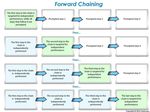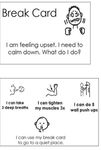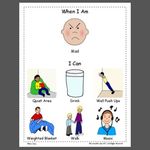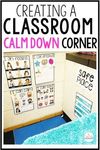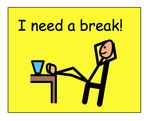"The New Normal" - Autism Society
←
→
Page content transcription
If your browser does not render page correctly, please read the page content below
“The New Normal”
Strategies to Successfully Transition
Your Child/Adult Back to School/Work After the
COVID-19 Pandemic.
James Ball, Ed. D., B.C.B.A.-D.
President/CEO
JB Autism Consulting
Kristie Brown-Lofland, M.S., CCC-A
Educational Consultant
KBL ConsultingTable of Contents
I. Introduction
II. Strategies
i. Schedules
ii. Social Narratives
iii. Video Modeling
iv. Repetition
v. Safe Place/Person in School
vi. Chaining
vii. Video Meeting with Staff
viii. Reinforcement/Motivational System
ix. Establish Routines in Advance/Simulate
a Typical Day
x. Anticipate their Sensory Needs and be
Prepared
III. ConclusionIntroduction We have arrived to a new normal - life after COVID-19. How do we help those with developmental and/or intellec- tual disabilities and those on the autism spectrum return to school or adult services? It has been a long haul at home! Both the children and the adults are used to the home environment and routines. Some students have been out of their school/adult program since March. It is now time to go back to the normal school/work routine, but what does that “normal” mean? Schedules are different, structure is not the same and learning has been inter- rupted, yet hopefully maintained. How do parents prepare their child to transition back to school? How do we get started? This workbook will give you strategies that you should be putting in place prior to your child going back to school or to their adult services placement. Each strategy will be explored in depth with examples to follow so that you and your child will be prepared for a successful first day when returning to school or adult program. Let us get started.
Scheduling The most important strategy is the use of scheduling. This helps the child understand the expectations of the environ- ment. They know what is going to happen next and can predict the future. It can start with a simple one item object schedule and transform into the use of an electronic device to keep track of their day(s). It important to remem- ber that when the individual "gets" whatever schedule they are on, it is time to “up the ante” and make the system more sophisticated. We all use some type of schedule in our own lives and using one for the person with autism will allow them to know what is expected of them, what they may be earning for following the schedule and also allow them to predict the future. This schedule should be made of pictures with the written word under each picture, or just the written word (if the person can read). The person with autism should have some choice in what the schedule looks like. For example, if we know we have four assignments we need to get done, we can put out the assignments and ask the person which one they want to do first, second, etc. This will allow them to have some say in the order of the things that need to be done. Because often they have such little choice in their lives, it is important that they be allowed to assist with their schedule. For transitioning, it is critical to use a calendar type sched- uling system. If you know when the child will be going back to school or work, you can place a special sticker or
icon or picture to signify the first day. You can have the in-
dividual count the days down until they will be going to
school or work. They can cross off each day or put a spe-
cial sticker on each day in anticipation for the first day.
*The schedule can include, but not be limited to:
-Written Word with or without Pictures
-Pictures (actual/artificial)
-Objects
*This is dependent upon the child’s overall ability level.
Resources:
1. A Social Narrative on Why I Use a Schedule can be
downloaded for free from the Indiana Resource Cen-
ter for Autism at https://www.iidc.indiana.edu/irca/re-
sources/visual-supports/school.html
Click the school button and scroll down to “Why I Use
a Schedule”.
2. Free visual schedule materials for parents:
https://www.andnextcomesl.com/2014/04/free-printa-
ble-daily-schedule.htmlParent Checklist ✓Pick the Appropriate Schedule (Pictures/Written Word/or a Combination) ✓Organize/put the schedule in order. ✓When the task is com- pleted, remove or cross off the picture or word. ✓Start with new schedule af- ter completion.
Object Schedule https://autismclassroomresources.com/make-use-object-schedules/ To learn more, go to fhautism.com: Early Intervention in Autism: Real Life Questions, Real Life Answers by Dr. James Ball
Social Narrative Social narratives are visually represented stories that de- scribe social situations and socially appropriate responses or behaviors to help individuals with autism spectrum disorder (ASD) acquire and use appropriate social skills. Social narratives are written, descriptive accounts of ap- propriate social behaviors or responses to common social situations (https://autisminternetmodules.org/user_login.php). For example, Olivia's parents wrote a Social Narrative and started using it before they went anywhere with Olivia. Often, they would reread it (or part of it) before getting out of the car when they anticipated Olivia’s “want meter” was running high. Their narrative included concrete strategies for Olivia to use if she felt frustrated to the point of hitting. For example, while riding in the car Olivia sees the McDonald’s sign and wants chicken nuggets. Dad has said “no”, and they are having a picnic for lunch. Mom or Dad offer her a choice of two other al- ternatives (that are workable). “We can’t go to McDon- ald’s today, but you can have a choice for lunch. You can have chicken tenders or a cheesy ham sandwich.” If Olivia’s behavior continues to escalate, they remind Olivia of her self-control strategies that were previously taught to her: “Olivia calm down. Take 10 deep breaths” or “Olivia, nice hands. Close your eyes and think of the waves on the beach.” The narrative also mentioned that sometimes what Olivia wants might not be immediately
available and she would have to wait. For instance, in- stead of Dad giving in to Olivia’s negative behaviors, he could have told Olivia that the family would go to lunch at McDonald’s the next day. When using a Social Narrative with a nonverbal child, build a Social Narrative that includes actual pictures in the appropriate social sequence or use a video model of appropriate behavior you want to see. For example, if your Social Narrative is focused on eating with utensils, instead of verbally prompting her through the entire din- ner to use her fork, show her the picture sequence of us- ing a fork or a video model of using a fork. Resources : https://www.youtube.com/watch?v=kKZ2_mraU4Y https://www.youtube.com/watch?v=qLuDNpUSwrw https://www.youtube.com/watch?v=dBc-83D5cNc These are YouTube videos about eating with utensils. You may need to take pictures and put them in sequential order.
Parent Checklist ✓Identify one social skill that needs to be addressed. ✓Write the social narrative with or without pictures. ✓Read the narrative with the indi- vidual prior to the activity. ✓Read the narrative on more than one occasion when neces- sary. ✓Positively reward the individual when he/she appropriately uses the social skill.
Example:
When I Get Frustrated
Sometimes when I go out with my family, I get frustrated
when I cannot have what I want or do not get to have a
choice. Sometimes what I want is not available when I
want it and I may have to wait. This may make me frus-
trated. It is okay to get frustrated, but it is not okay to hit.
The next time I get frustrated I will try to
1. Say “I’m frustrated”.
2. Clap my hands or stomp my foot.
3. Take 10 deep breaths.
4. Pick another offered choice.
Making an appropriate choice will keep me calm and make
my family happy.
(created by K. Brown Lofland)
(created by K. Brown Lofland)
https://lessonpix.com/materials/9926316/Book
To learn more, go to fhautism.com:
“No More Meltdowns” by Dr. Jed BakerVideo Modeling Video Modeling is an instructional teaching technique that utilizes assistive technology and videos as the primary ve- hicle. It is a strategy that we have personally begun to use exclusively with the individuals we work with, regardless of ability or age. Video modeling has a growing research base and can be used to teach a variety of skills such as social skills, play skills and many others. Video modeling has three core components: (1) Videoing the individual to be taught or someone else or commercially made videos (either store bought or got- ten online) highlighting the behavior to be taught, (2) The video is used to teach the skills, and (3) The individual is then required to perform the skill. It is critical that parental/guardian permission be acquired in writing prior to starting any video modeling.
Parent Checklist
✓ Pick the skill.
✓ Tape the video.
✓ Put it on a loop. (Looper, Shadow
Puppet, etc. app).
✓ Play it multiple times.
Example:
How to Tie a Tie Video Model:
https://www.youtube.com/watch?v=xAg7z6u4NE8
To learn more, go to fhautism.com:
“Video Modeling” by Steve LockwoodRepetition People with an ASD or other developmental disabilities love to learn through repetition and may need a lot of it. Therefore, it should be a cornerstone to any programming, especially with recreational and leisure activities. Individu- als need multiple opportunities to try each new skill. It may take a long time for an individual with ASD to get comfort- able in the environment before they can enjoy particular activities. It is critical that you stay as consistent and pre- dictable as possible and the way to do this is through rep- etition. In combination with scheduling, it is the perfect way to allow the individual to understand expectations and can predict what is going to happen next. This reduces stress and anxiety and helps the individual establish new rou- tines and learning.
Parent Checklist
✓Start the activity
✓Repeat
✓Repeat
✓RepeatExample: Hand-washing schedule Give the child/adult the cue, “wash hands” then nonverbal him/her to follow the visual. Do the activity as many times as possible without boring you or the child/adult. Attempt to do it in naturally occurring time (I.e., before eating, after going out and now after touching something). For chil- dren/adults that are more challenged, do 2/3 opportunities in a row. Start and end the same way. Break up the op- portunities throughout the day, getting as many repetitions in as possible. Do not forget to reinforce the child/adult for success. To learn more, go to fhautism.com: “You Can’t Make Me! Pro-active Strategies for Positive Behav- ior Change in Children” by Dr. James Ball
Safe Place/Person in School or Work A safe person or place may already be set up for your indi- vidual. If not, a decision from the team needs to confirm a safe place or a safe person. The team could interact with one another through a virtual meeting if social distancing is in place. Once the safe person or place is established, a conversation with the child/adult should be conducted prior to returning to school or their work placement. In addition, a protocol on how the safe person or place is to be used should also be determined. For example, a system could be established where the individual has a pre-specified amount of break cards that allow him/her to leave an envi- ronment where they are not comfortable or are beginning to feel anxious. From there, a protocol should be de- signed as to exactly what will happen. For example, where the child/adult will go or what person they will seek out. The safe place should in an open area that has clear visual boundaries (i.e. tape on the floor). A calming corner or safe place could have pillows, calming sensory tools, or even a weighted blanket. The safe place could have visuals that represent the choices the individual may select from in order to calm. There may be occasions where the individual is not able to use this type of system. When this occurs, the individual should just be kept safe anyway possible as this is not a teachable moment. There should be a definition of ante- cedent behaviors that lead to a potential meltdown. If the child/adult begins to display these behaviors, the staff per- son should direct the individual to the safe place or safe
person. This can be done using visuals and/or a social narrative. Safe spaces can be a great calming strategy for autism meltdowns. For some children, an adult or a safe per- son may go with them to their calm down corner to help them calm down. For others, the child/adult will need space to be alone to calm down. This would be child/adult specific. Resources: https://www.pinterest.com/natalielynnkindergarten/
Parent Checklist
✓ Establish the safe place/person
✓ Direct individual to safe
place/person prior to escalation
✓ Use when necessary
✓ Praise when the individual uses
the safe placeExamples: Safe Place Social Story When I am feeling anxious or getting upset, I may go to my safe place in (the resource room, in the back of my classroom, etc.). Before I go to my safe place, I will place a break card on my desk so my teacher will know where I am going. In my safe place I can choose a calming strategy. To calm, I will set the time for 5 minutes and choose from my calming menu: o Sit on bean bag or rocking chair o Use a body curl up o Do 5 chair pushups o Spend 5 minutes in the quiet tent o 5 minutes of listening to music with headphones.
Created by K Brown Lofland
Created by K Brown Lofland To learn more, go to fhautism.com: “No More Meltdowns” by Dr. Jed Baker “New Social Stories” by Carol Gray
Chaining Shaping and chaining are often referred to in tandem, but they are different techniques. Whereas shaping is usually used in teaching one specific skill or aspect of a skill, chaining is a teaching strategy that encompasses an en- tire sequence of behaviors or actions that, when put to- gether, make up a complex skill. For example, chaining is used to teach skills such as self-help, personal care and domestic chores that might include toothbrushing, hand washing, or face washing. Chaining involves breaking down a skill into its component parts and teaching each step in the chain until the child can perform the entire task. There are two types of chaining: forward and backward. In forward chaining, we start with the first step in the pro- cess and build from there. In backward chaining, it is just the opposite; we start with finished skill and proceed from there. Resources: https://autismclassroomresources.com/a-teaching-strat- egy-that-can-save-you-time-chaining/ https://accessibleaba.com/blog/chaining-task-analysis-au- tism
Parent Checklist
✓ Start the program.
✓ Move to next step when the in-
dividual is independent (no
prompts) in performing the
step you are on.
✓ Repeat above step until the
program is complete.
✓ Praise the individual for suc-
cess.Example:
Forward Chaining of Wearing a Face Mask
1. Place face mask in hands with the inside of the mask
facing you.
2. Put the face mask over your chin, mouth, and nose.
3. Place the elastic bands behind both of your ears. If
you have ties instead of elastic, tie them behind your
head tightly.
4. Adjust the mask to cover chin, mouth, and nose.
If necessary, add pictures to each of the steps.Video Meeting with Staff You and your child have probably already experienced some type of video platform meeting. If your child is doing e-learning while school is not in session, then he or she is utilizing some type of technology to complete their school- work. If you have an adult, he or she could be video con- ferencing with their staff at the adult center at their job or communicating with friends. Prior to the beginning of the upcoming school year, there should be a meeting to go over the child’s behavior plan and/or reinforcement sys- tem. This meeting could be a very brief, yet productive meeting so that you as a family can provide the structure and strategies to support the individual as they go back to school or their work setting. This meeting will enable the individual to be more prepared and therefore reduce their anxiety. If possible, a video “meet and greet” with any of the up- coming school year’s staff or work staff, would be benefi- cial in reducing the individual’s anxiety. In addition, a video could be made showing the school or work building, areas where the child/adult will be attending class or work- ing, etc. This is an opportunity to obtain any information to simulate a typical school or workday from the staff. Any video mod- els would be helpful to show changes in the class- room/work environment.
Parent Checklist
✓Schedule meeting with staff.
✓ Discuss pertinent information (be-
havior plan, schedule, etc.).
✓ Obtain visuals or video modeling re-
cordings that are used at school or
work.
✓ Anticipate any changes (environmen-
tal, staff, etc.).Example: Visual of classroom distancing Visual of boundary around chair
Reinforcement/Motivational System The most critical aspect of any program is motivation; keeping children engaged and wanting to learn. How do we entice children to build a relationship, complete a task, or learn a skill; especially during those times when all they want to do is what they want to do? We keep motivation and engagement active through the regular use of mean- ingful reinforcement. However, remember reinforcement is very individual, and even though there may be a class- room system of motivation, that does not mean that the child on the spectrum is going to "buy into it" initially. Our goal is for him/her to use that system. However, in the be- ginning we may need to do another more individualized system, to motivate him/her; knowing we are always work- ing towards that classroom system. The system you use at home should mirror the one that his or her school or adult service agency has been using. Resources: Free printable First/then boards: https://autismbehaviourtherapy.com/free-printable-first-and- then-board/ https://www.storyboardthat.com/storyboards/mon_shari/first- then-template https://www.teacherspayteachers.com/Product/First-Then- Schedule-Board-Freebie-713428
Parent Checklist
✓ Get the exact motivational system
from school/work.
✓ Implement with consistently during
simulated school/workday.
✓ Give choices when appropriate.
✓ Praise the individual when they are
using appropriate behavior.Example:
https://iris.peabody.vanderbilt.edu/wp-content/uploads/2014/11/ecbm_p07_chart.png
https://images.app.goo.gl/v7JQ4jD1GLbkeUZv7
https://i.pinimg.com/600x315/d9/1e/0b/d91e0b16a0088cc0f7b9cf833e9bdedd.jpg
Establish Routines in Advance/Simulate a Typical Day Establishing routines in advance is by far the most im- portant step in the entire process of getting your individual ready for the return to their school or work program. Three weeks prior to school/work starting, simulate a school/workday. Many children will display some difficulty separating from parents to attend school. The behaviors shown by the child could be; tantrums when separating, problems sleep- ing alone or refusal to attend school without parents. Some shyness or worry about schedules, schoolwork, or friends is natural during the back-to-school transition. 1. A week or two before school, start preparing your indi- vidual for the upcoming transition by getting back to school/work routines, such as bedtimes and selecting to- morrow’s clothes. 2. Create a school/work morning routine and practice it prior to the start of the first day. Begin waking up your indi- vidual a little earlier each morning so that he or she is ac- climated to the new wake-up time before returning to school or work. 3. Begin getting your individual up and be done with their morning routine prior to the time when school/work would begin. For example, if school or works starts at 8:00 a.m., then have the child/adult begin their school/work routine at 8:00 a.m.
4. Stay on a schedule and simulate as many transitions as possible. 5. Use the individual’s motivational system as it would be in their school/work environment. 6. Stay as close to the schedule as possible. 7. Visit the school or workplace before the school year begins or before returning to work. You may want to prac- tice drop off and pick up routines. 8. Come up with a prize or a rewarding activity that the child could earn for separating from mom or dad to attend school. 9. Validate the individual’s worry by acknowledging that, like any new activity, starting school or going back to work can be hard but soon becomes easy. 10. Talk to your individual frequently about what to expect when they return to school or work. It is a simple way to help reduce your individual’s anxiety. 11. Cross days off on a calendar. Crossing days off the calendar may help your individual better understand when the school year or returning to work starts. 12. Take a virtual tour of the school if possible. This can be arranged with your child’s school team. While you might not get to meet your child’s new teacher this early, at least your child will become familiar with the building prior to attending. 13. Take pictures of the school and personnel and incor- porate them into a social narrative so that you and your child can review it prior to returning. You may be able to find these pictures on the school’s website.
15. If your individual uses an augmentative device to com- municate, make sure the device is charged and in good working condition. 16. If your individual has sensory issues, make sure he or she has a favorite sensory item available from the first day. These suggestions can have a large effect on the 'individuals behavior in a positive way and will reduce everyone’s anxiety. Therefore, it is so important that during this three-week period, you are as consistent as possible.
Parent Checklist
✓ Start two/three weeks prior to
school/work starting.
✓ Stay consistent.
✓ Stick to the schedule no matter
what!
✓ Use a safe place if necessary.
✓ Stay positive!Example: Work schedule: file:///C:/Users/klofl/Downloads/work+Sched- ule-material_9969774.pdf School schedule: file:///C:/Users/klofl/Downloads/School- ing+Schedule-material_9807834.pdf
Anticipate their Sensory Needs and be Prepared We talk about individual sensory needs. These are going to be specific for each individual. These are activities that are easy to do at home. You should have established rou- tines for their sensory needs already. You may not have a swing, but the child could bounce on a therapy ball. In this section, we are looking at what changes the child might encounter in going back to school or their work set- ting. One thing that potentially could happen is your indi- vidual might have to wear a mask at school or their work center. It is critical that you as a family get your child used to wearing this type of device. As time goes on, there may be other restrictions that schools/adult work centers may require. Try to keep informed of those changes, so you can prepare your child for any changes they will encounter in their school or work environment. Two strategies that would help assist with wearing masks and adapting to new routines, are pairing, and shaping. Pairing is where you would introduce an unfamiliar object such as the face mask and pair it with positive reinforc- ers. For example, before we ask the child to wear the mask, we would have them hold the mask followed with praise and high fives. Shaping is to then reinforce each step towards wearing the mask. First, they would hold the mask and we rein- force. The next step would be to bring the mask toward their face, rewarding. Then reward the child when they
place the mask onto their face. Do the same for allowing the elastic to be put behind their ears, etc. until the child is wearing the mask, all the while rewarding. This may take several trials for each individual step. Try not to move ahead too quickly. The following websites contain social narratives and visual supports on wearing a mask and/or how COVID-19 will af- fect school and/or work. 1.http://www.noodlenook.net/covid-19-social-story-free/ 2. https://paautism.org/resource/wearing-mask-social- story/ 3. https://www.teacherspayteachers.com/Product/We- Wear-Masks-Coronavirus-Social-Story-about-Wearing-a- Mask-5425981 4. https://www.autismlittlelearners.com/2020/04/seeing- people-wearing-masks-story.html 5. https://www.autism.org/wp-content/uploads/2020/04/I- can-wear-a-mask-1-1.pdf You tube Videos: 1. https://www.youtube.com/watch?v=dYChl3jaVzA 2. https://www.youtube.com/watch?v=dYChl3jaVzA&t=27s 3. https://www.youtube.com/watch?v=ipvbNzK4nXc
Parent Checklist
✓ Schedule sensory breaks.
✓ Have brain breaks. (Go Noodle,
Adventures to Fitness, etc.)
✓ Break as often as needed but re-
turn to schedule ASAP/pick up
where you left off.Example: Brain breaks: Sensory Activities:
Conclusion
As your individual transitions back to school or work, it is
key to remember that preparation will be paramount to
their success. As discussed earlier in this workbook, at-
tempt as much as possible to implement this structure two
to three weeks in advance. Understand, that at first, your
individual is going to be uncomfortable with the situation.
However, through repetition and consistency they will get
used to their schedule again and their transition to school
will be successful.
As we move forward and look to the future, there are
many unknowns of how the virus will impact school and
work settings. Other considerations that may need to be
addressed using some strategies we have discussed are:
• Wearing face masks or other PPE.
• Wearing gloves
• Eating lunch at your desk. Gatherings in cafeterias
may not be allowed or restricted to small numbers.
• No outside recess in large groups. May have recess
in the classroom only.
• No gathering in break areas at the workplace.
• Special area instruction may take place in the class-
room such as art, music, etc.
• Hand washing protocol.• Using hand sanitizer.
• No interactions with other students outside of the
child’s classroom.
• Meetings may only be held virtually.
• Changes in the school calendar such as late start,
partial days, continuing to do school virtually. This
could also apply to the work environment.
It will continue to be challenging as new regulations and
protocols are developed over the coming months.
Good luck and stay safe!Authors: Dr. Jim Ball, A Board-Certified Behavior Analyst (BCBA-D), has been working in the private sector field of autism for over 25 years. In a variety of settings, he has provided educational, employment, and residential services to children and adults af- fected with autism. Dr. Ball has lectured nationally and internationally, provided ex- pert testimony, and published in the areas of early intervention, behavior, consultation services, social skills, technology, and trauma. He is a featured author and is on the advisory board for the Autism Asperger's Digest magazine. His 2008 triple Award- Winning book, "Early Intervention & Autism: Real-Life Ques- tions, Real-Life Answers" was released in February of 2008. Dr. Jim’s newest release “You Can’t Make Me” sums up his years of working with behavioral challenges for individuals from 18 months to 80 years of age.
Kristie Brown Lofland is an Autism/ Educational Consultant cur- rently in private practice. Ms. Brown Lofland has previously worked in clinical, public school and university settings. Ms. Brown Lofland has an extensive background in Speech Pathology and Audiology and in the education and communication of indi- viduals with Autism Spectrum Disorders. She has made many presentations nationally and internationally in the area of com- munication and autism. Lofland holds a bachelor’s degree in Speech Pathology from Indiana State University (1972), a master’s degree in Audiology from Indiana State University (1979) and a Director of Special Education certificate from Indiana University (2003). She has held various offices and served on various com- mittees with the Indiana Speech, Language and Hearing Associa- tion. She was the recipient of Honors of the Indiana Speech, Lan- guage and Hearing Association for outstanding contributions in the field (2007). Ms. Lofland also received the “Best in School Ad- vocacy” Award from the Autism Society of Indiana (2007). She currently serves on the Panel of Professional Advisors for the Au- tism Society of American and is a member to the Executive Board for the Autism Society of Indiana.
You can also read


